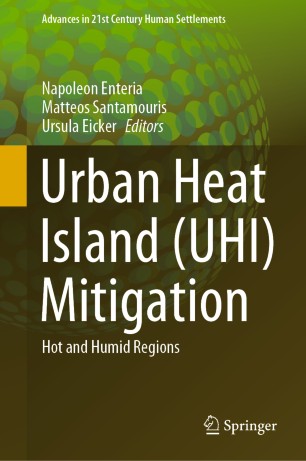

Most ebook files are in PDF format, so you can easily read them using various software such as Foxit Reader or directly on the Google Chrome browser.
Some ebook files are released by publishers in other formats such as .awz, .mobi, .epub, .fb2, etc. You may need to install specific software to read these formats on mobile/PC, such as Calibre.
Please read the tutorial at this link: https://ebookbell.com/faq
We offer FREE conversion to the popular formats you request; however, this may take some time. Therefore, right after payment, please email us, and we will try to provide the service as quickly as possible.
For some exceptional file formats or broken links (if any), please refrain from opening any disputes. Instead, email us first, and we will try to assist within a maximum of 6 hours.
EbookBell Team

4.1
90 reviewsThis book discusses the concepts and technologies associated with the mitigation of urban heat islands (UHIs) that are applicable in hot and humid regions. It presents several city case studies on how UHIs can be reduced in various areas to provide readers, researchers, and policymakers with insights into the concepts and technologies that should be considered when planning and constructing urban centres and buildings. The rapid development of urban areas in hot and humid regions has led to an increase in urban temperatures, a decrease in ventilation in buildings, and a transformation of the once green outdoor environment into areas full of solar-energy-absorbing concrete and asphalt. This situation has increased the discomfort of people living in these areas regardless of whether they occupy concrete structures. This is because indoor and outdoor air quality have both suffered from urbanisation. The development of urban areas has also increased energy consumption so that the occupants of buildings can enjoy indoor thermal comfort and air quality that they need via air conditioning systems. This book offers solutions to the recent increase in the number of heat islands in hot and humid regions.